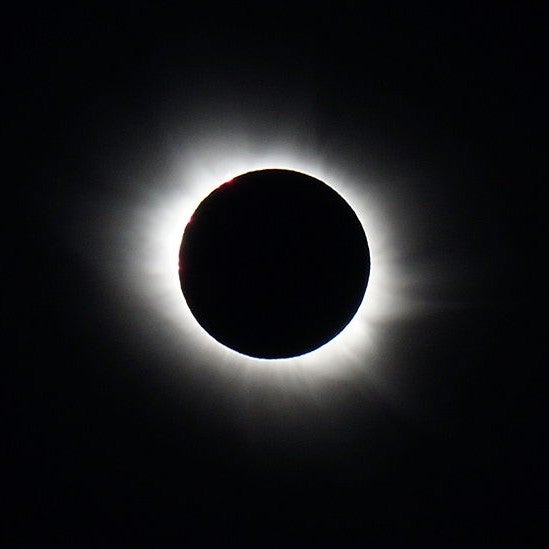
The solar corona – our star’s outer atmosphere – is visible only during the total phase of a solar eclipse. The reason is a contrast effect, really. The Sun’s photosphere (its visible face) is so brilliant that its light completely swamps the faint illumination (along with all the delicate details) of the corona.In fact, the corona glows with only one-millionth of the brightness of the photosphere. Believe it or not, that output is more than you might think. What else shines with a similar illumination? The Full Moon. Indeed, if you want to experience the level of illumination eclipse watchers will experience during totality, head outdoors some night when the Full Moon is in the sky.A Hydrogen-alpha (Hα) filter normally is a great way to observe the Sun. Because it only passes light with a wavelength of 656 nanometers, the normally dangerous brilliance of our star falls to a safe level. In doing so, the Hα filter acts the same as a visual solar filter, like a #14 welder’s filter or the cardboard and Mylar eclipse glasses manufacturers currently are producing by the millions.Unfortunately, if you try to view or photograph the much fainter corona, the result will be the same as trying to view it through eclipse glasses: You’ll see nothing. So, you can take as many Hα images during the partial phases of the eclipse (when the photosphere is still visible) as you want, but during totality, you’ll need to use a camera with no filter.
Senior Editor









